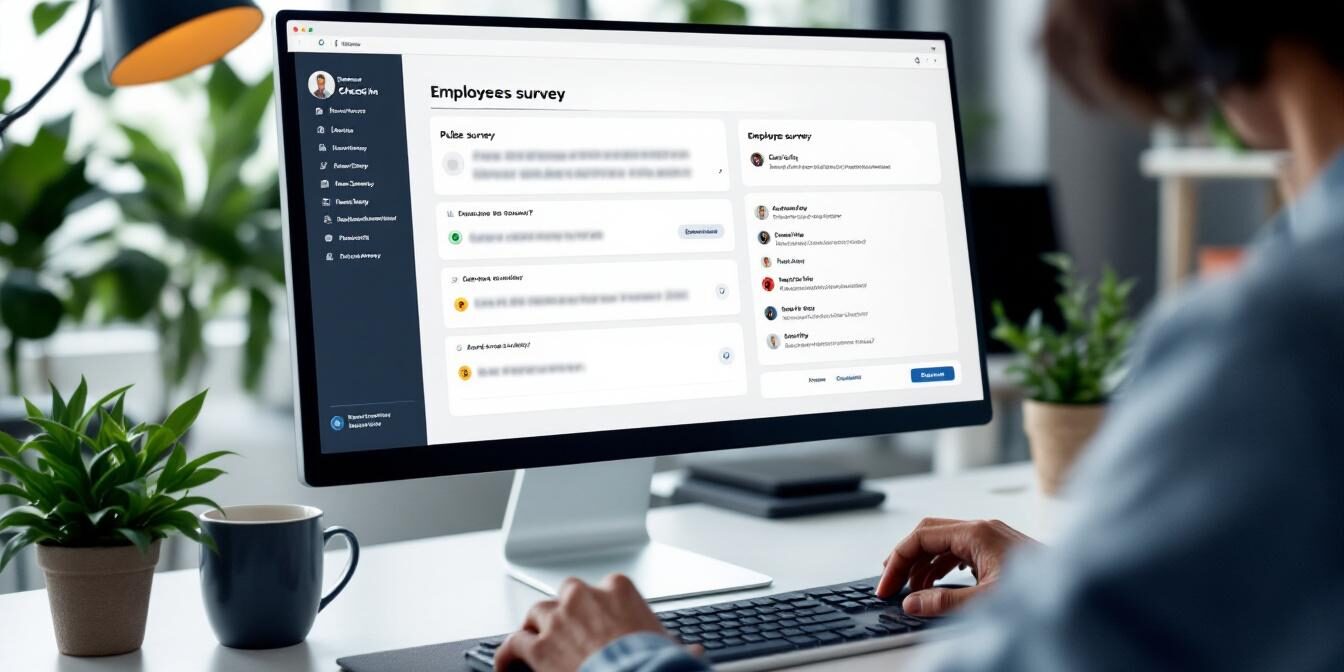Pulse surveys—they’re the hot new thing in the world of HR and leadership. Quick, snappy, and insightful, they’re like a real-time heartbeat monitor for your workforce. At LEAD.bot, one of the biggest questions we hear is: “Are these really anonymous?”
Totally fair question—because the magic of pulse surveys lies in people feeling safe enough to share their unfiltered truth without fear of repercussions. But how do these little surveys protect that sacred anonymity? Let’s break it down. We’ll dive into what makes or breaks anonymity, toss in tips for keeping things confidential, and explore their broader potential for leaders across organizations.
Oh, and spoiler alert: if you’re using tools like Slack or Microsoft Teams, running pulse surveys just got a whole lot easier.
What Are Pulse Surveys?
Quick Check-Ins for Real-Time Insights
Pulse surveys are the espresso shots of employee feedback—short, sharp, and strong. Unlike traditional annual surveys that can feel like drinking from a firehose, pulse surveys are just a handful of questions designed to take minutes to complete. They’re perfect for capturing real-time insights without disrupting workflows.
Not Just an HR Thing
Here’s the kicker: pulse surveys aren’t just for HR teams anymore. Team leaders are increasingly using them as a way to connect with their teams after critical events, like all-hands meetings, major project milestones, or even during periods of change. These surveys help team leaders identify potential friction points, gauge morale, and respond proactively.
Use Cases for Pulse Surveys
Pulse surveys shine brightest when they’re strategically deployed to get actionable feedback. Some examples:
- After All-Hands Meetings: Gauge how well your message landed with employees and uncover lingering questions.
- Post-Critical Team Meetings: Understand how aligned your team feels on goals or projects after a major discussion.
- Change Management: After introducing new policies or tools, use a survey to get real-time reactions and identify roadblocks.
- Team Dynamics: Check in during high-stress periods to see how team members are holding up.
- Performance Review Follow-Ups: Get insights on how employees feel about the feedback process and next steps.
The Impact of Regular Feedback
Now, the beauty of these little dynamos: they can really shake up the office vibe. We’re talking about companies checking in weekly or bi-weekly-like clockwork-to catch those sneaky trends before they blow up into full-blown dramas. Picture this: pulse surveys are like the canary in the coal mine, sniffing out stress triggers and giving you the scoop on what’s stressing out your crew.
Agility in Organizational Response
But wait, there’s more-agility. Yeah, pulse surveys are the Usain Bolt of feedback. You roll out a new policy… blam, let a pulse survey run and see if your employees are throwing confetti or eye rolls. It’s the feedback loop in hyperdrive, letting companies pivot and jive with their employees’ needs on the fly.
Data-Driven Decision Making
Now, let’s dive into the treasure chest-data. Pulse surveys dish out a motherlode of insights over time. Got a tech company scratching their heads ’cause remote workers feel like castaways? Pulse surveys to the rescue-BAM, virtual team-building activities, and engagement scores bump up 15%. That, my friends, is how the data cookie crumbles.
Integrating Pulse Surveys with Slack and Microsoft Teams
With most teams spending their days in tools like Slack and Microsoft Teams, meeting employees where they already are is a no-brainer. LEAD.bot makes it seamless to integrate pulse surveys into these platforms, offering:
- Instant Accessibility: Employees can respond to surveys without leaving their primary communication tools, making participation frictionless.
- Real-Time Notifications: Automated pings to remind employees to complete surveys on time.
- Centralized Insights: Survey results flow back into dashboards where leaders can analyze trends and act fast.
This integration eliminates the need for external tools, streamlining the feedback process while boosting response rates.
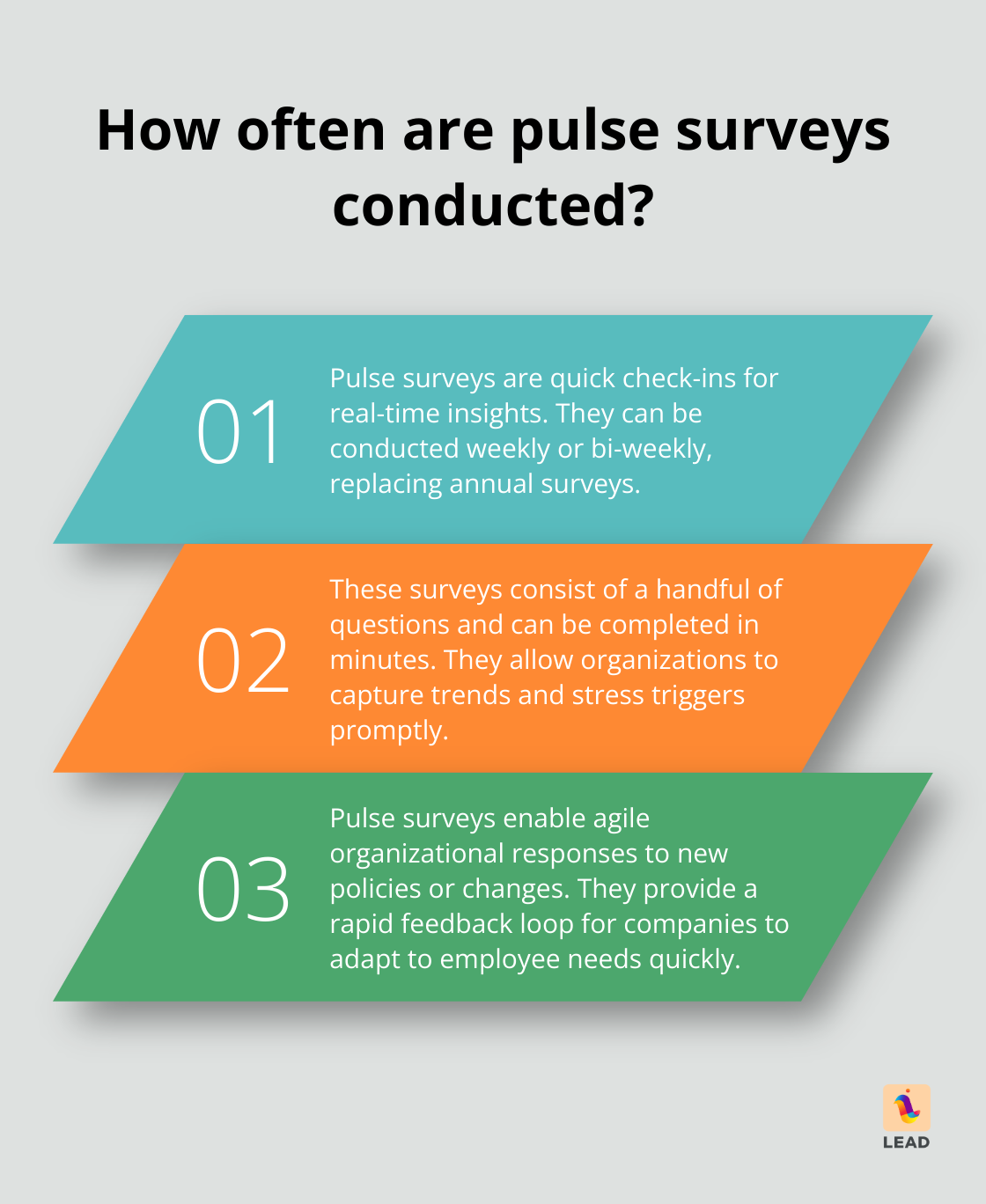
As we kick around the perks of pulse surveys, it’s only natural to ponder over confidentiality. Let’s dig into the crucial role of anonymity in these bite-sized check-ins and how it shapes their success.
Can Pulse Surveys Really Be Anonymous?
The Anonymity Challenge
Anonymity in pulse surveys-yeah, that’s a biggie in the corporate world. Over at LEAD.bot, we get why it’s a top priority. Employees spilling their guts without a worry? That’s where the gold nuggets of insight lie. But without the fear of Big Brother watching, the real, unvarnished truth flows.
The Demand for Confidentiality
Check this out: a report says 60% of workers are playing cloak and dagger with their identities at work. Why? It’s about speaking their truth without fretting over any potential backlash. But let’s not kid ourselves-achieving real anonymity? Not a walk in the park.
Technological Solutions for Confidentiality
Step into the tech ring, where survey platforms flaunt encryption, randomized IDs, and blend-in-the-crowd data reporting-all to cloak individual musings in a sea of responses (key for anonymity). But, cold hard truth: absolute anonymity? Rarely bulletproof. It gets tricky with small teams or standout demographics-linking feedback to people is sometimes doable. Choosing a platform that sweats the anonymity details? A no-brainer.
The Human Element in Preserving Anonymity
Tech’s a good wingman, but it won’t hold the fort alone. Humans? They’re the wildcard. Managers need a crash course in keeping curiosity in check-resist the urge to unmask the anonymous. Studies show that anonymous surveys can coax out more sensitive truths. But it rides on trust-believing the anonymity pitch. Transparent chatter around data handling practices? Non-negotiable.
Potential Pitfalls of Anonymity Breaches
Imagine this: worst-case, full-blown trust meltdown. Folks reportedly getting axed over ‘anonymous’ surveys? Yeah, that trust’s glassy surface shatters fast, wrecking feedback programs. The fix? Maybe bring in the cavalry-third-party survey handlers boost that layer of trust cred. (LEAD.bot, hints that this is their playground.)
Striking the Right Balance
The tightrope walk: lock in anonymity while still nabbing actionable intel. Go overboard with secrecy? Tough to zero in on specifics. Lighten up on it? Folks clamming up. A middle path could be motto-look at the big picture data while offering opt-ins for those keen to dial in the details.
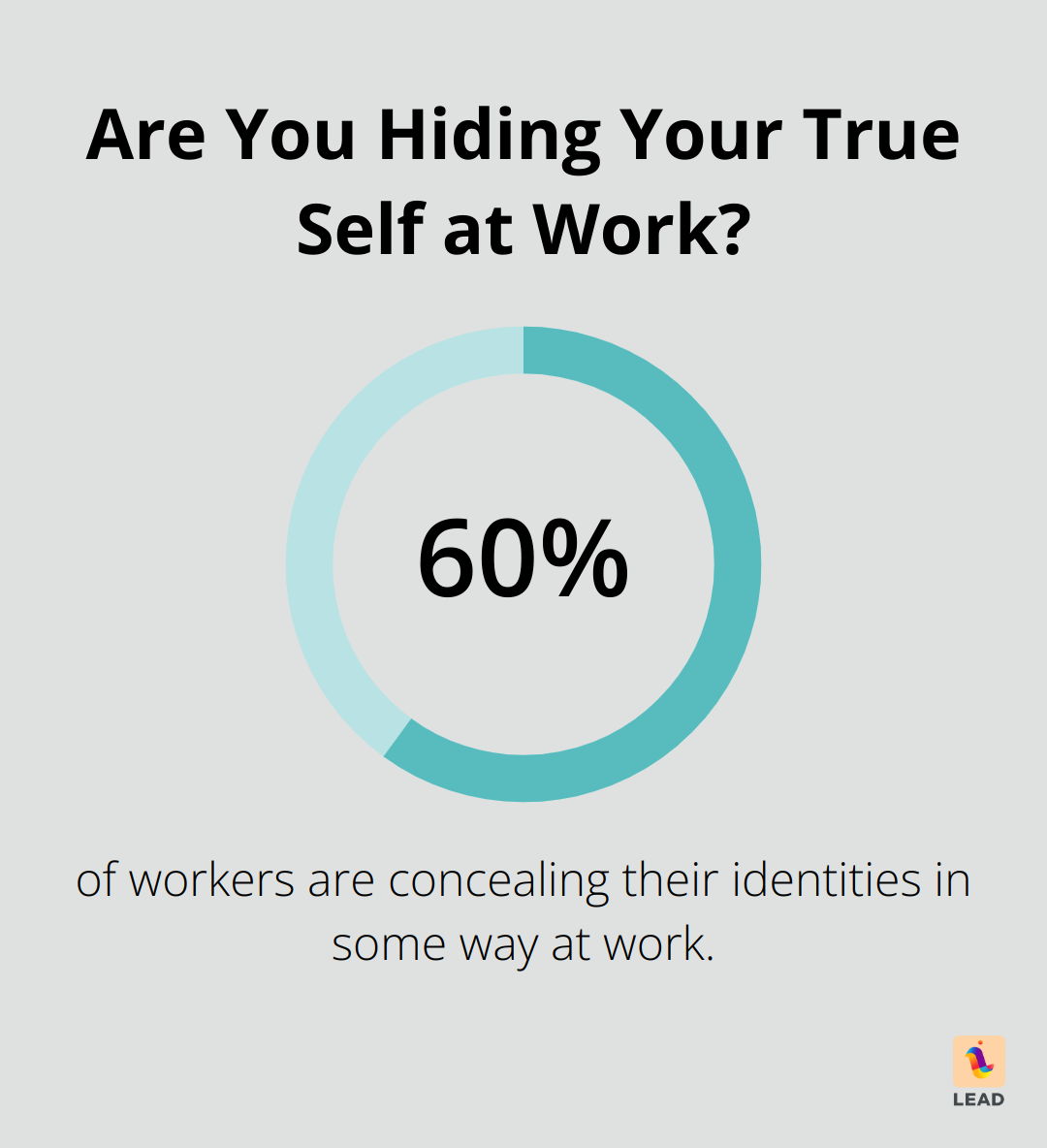
Wrapping our heads around anonymity’s labyrinth in pulse surveys reveals just how layered these feedback vaults are. Let’s peel back those layers and see what we’re dealing with.
What Impacts Survey Anonymity
Survey Design Challenges
Ah, the pitfalls of survey design-it’s like trying to navigate a minefield with a blindfold. Crafting questions can unintentionally become a game of “Guess Who?” Ask about roles or departments, and you’ve handed out clues like candy. Survey anonymity concerns are no joke, with 77% of folks reporting work-induced stress recently. The fix? Cast a wider net with your questions and keep the demographic probes to the bare essentials.
Data Handling Practices
Here’s where things get murky-how you gather, stash, and dissect survey data can either build a fortress of anonymity or turn it into a glass house. Employees? They know the score. Secure, third-party platforms (heads up, LEAD.bot) play the guardian role nicely, flaunting advanced encryption and fancy aggregation tricks to keep responses under wraps.
Company Size and Demographics
Small companies or those fun little departments with quirky specialties? Well, they’ve got a harder hill to climb. The secret sauce? Throw departments into a blender or get broader with job categories so nobody stands out like a unicorn at a horse show.
Survey Frequency and Patterns
Running frequent surveys? It could be like wearing the same outfit to work every day-folks notice. If someone keeps handing out low scores, especially in a cozy team, they might as well have a spotlight on them. Shake things up with your survey timing and questions. Some smart cookies are using random sampling for each pulse survey to keep predictability at bay.
Technological Solutions
High-tech survey platforms are stepping up with bells and whistles-think encryption, IDs that might as well be from space, and data reported in a beautiful mess of aggregation. Yet, perfect anonymity? Still the Holy Grail, especially when your team’s the size of a ping pong tournament. So, picking a platform that bows to privacy (take a bow, LEAD.bot) is essential if you want to keep your organizational secrets just that-secret.
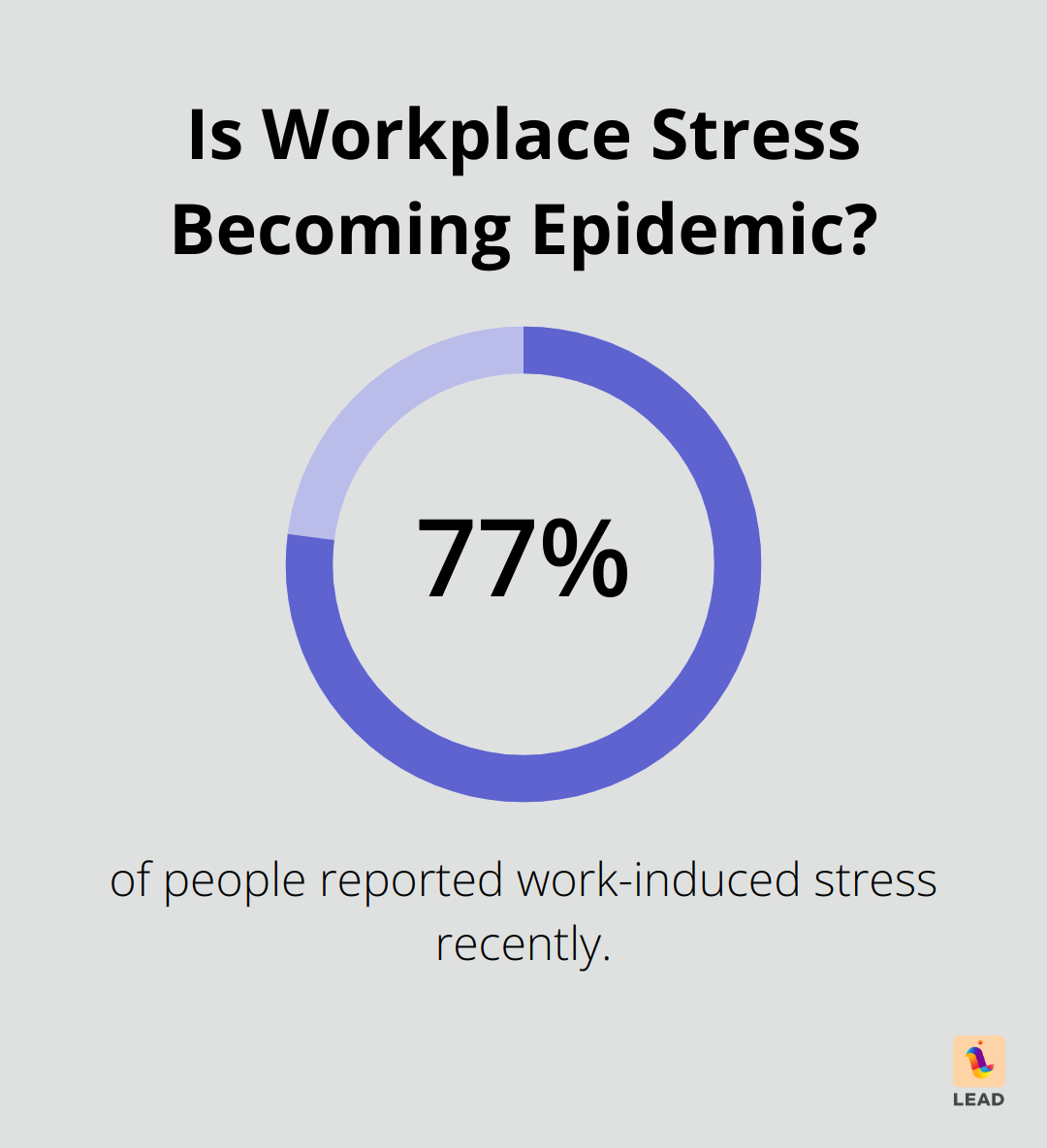
Final Thoughts
Pulse surveys are no longer just an HR tool—they’re a leadership essential for anyone looking to stay tuned in to their team’s vibe. From post-all-hands check-ins to gauging team alignment after critical meetings, these surveys empower leaders to act on feedback quickly and decisively.
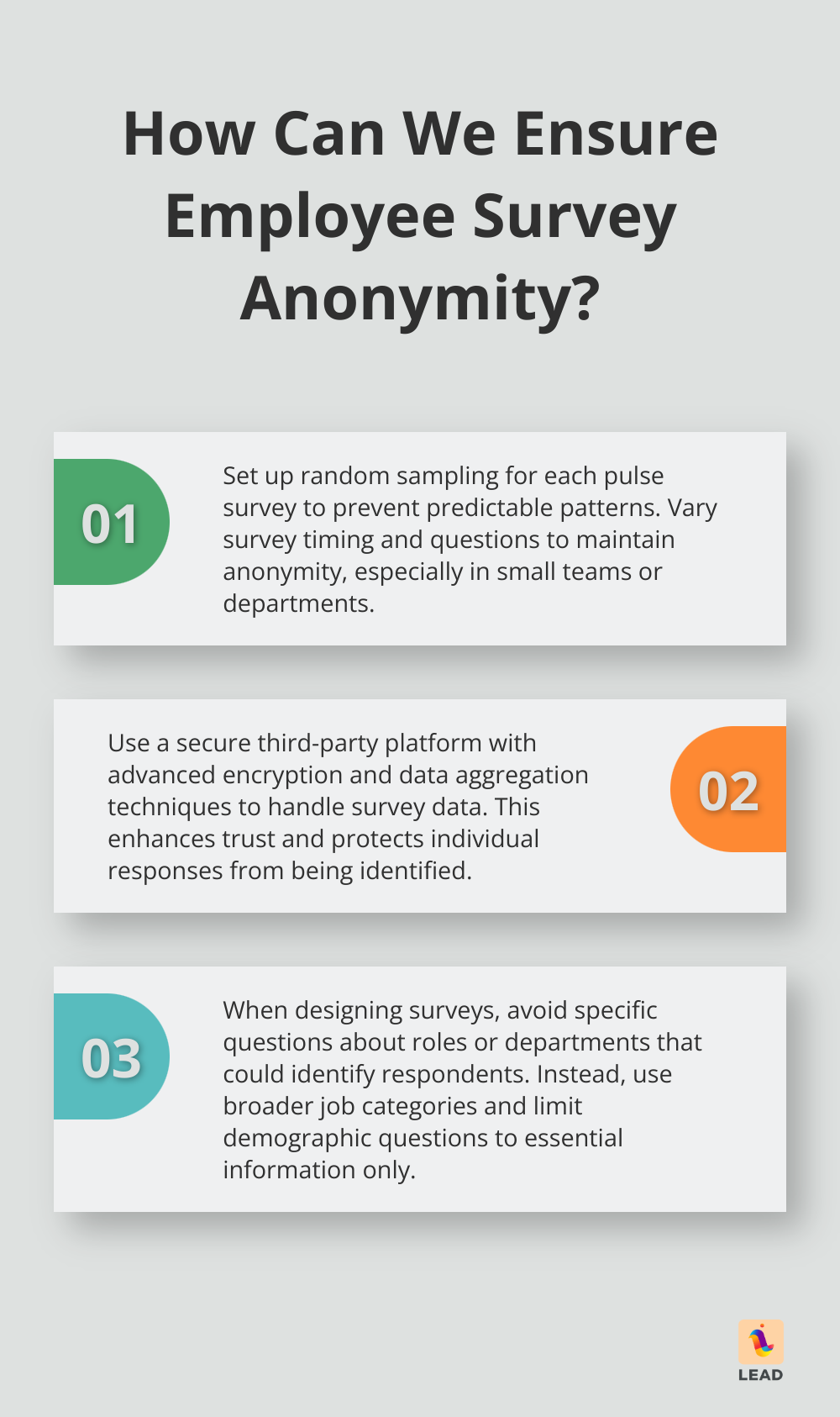
The key to success? Trust and transparency. When employees believe their input is anonymous and valued, they’re more likely to share candid insights. Tools like LEAD.bot make it easier than ever to deploy surveys directly in Slack and Microsoft Teams, simplifying the process and encouraging participation.
So, whether you’re a team leader fine-tuning your processes or an HR professional driving organizational change, pulse surveys can be your secret weapon. The real magic isn’t just in collecting feedback—it’s in taking action to create a culture where employees feel seen, heard, and supported.

